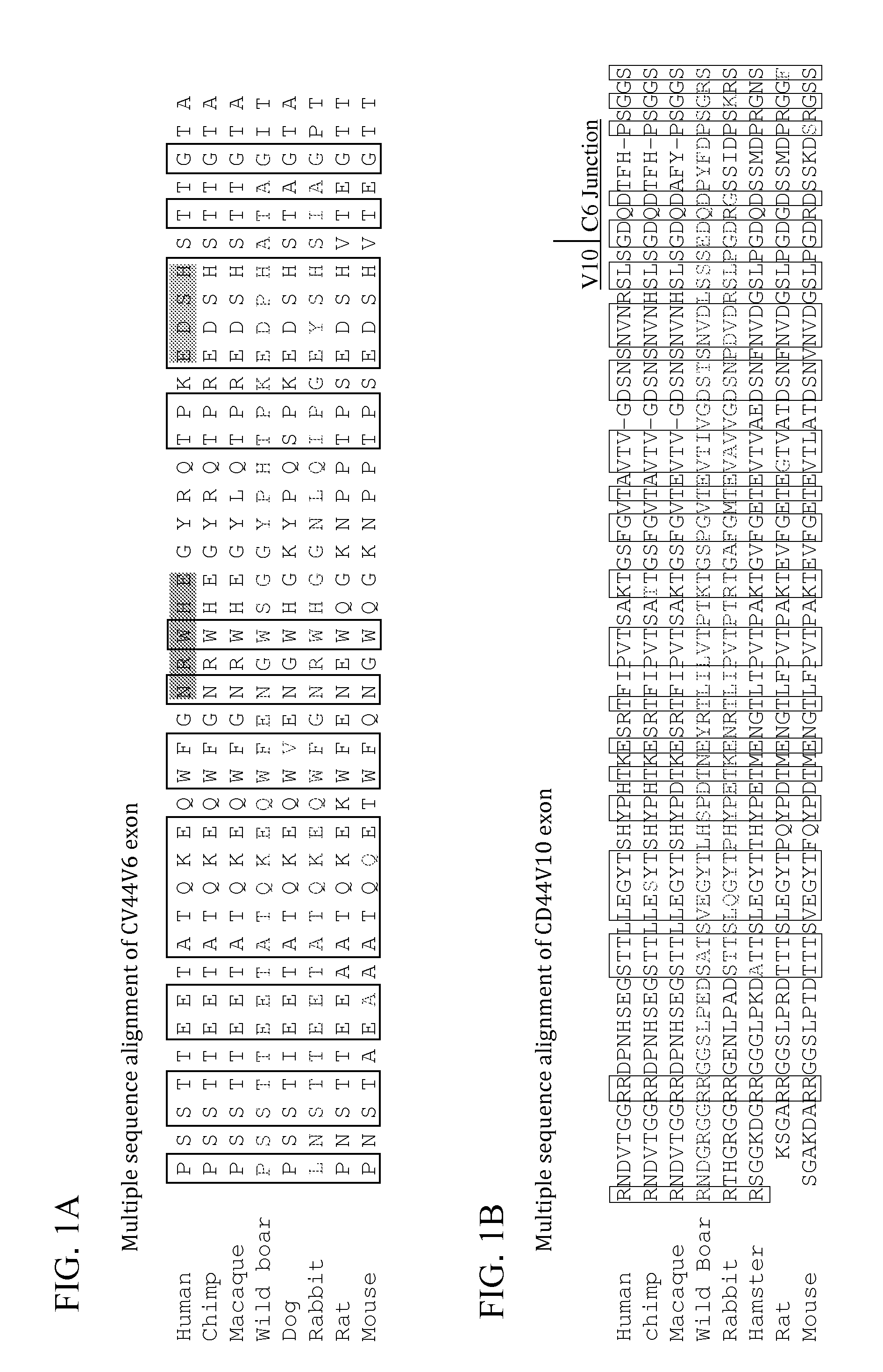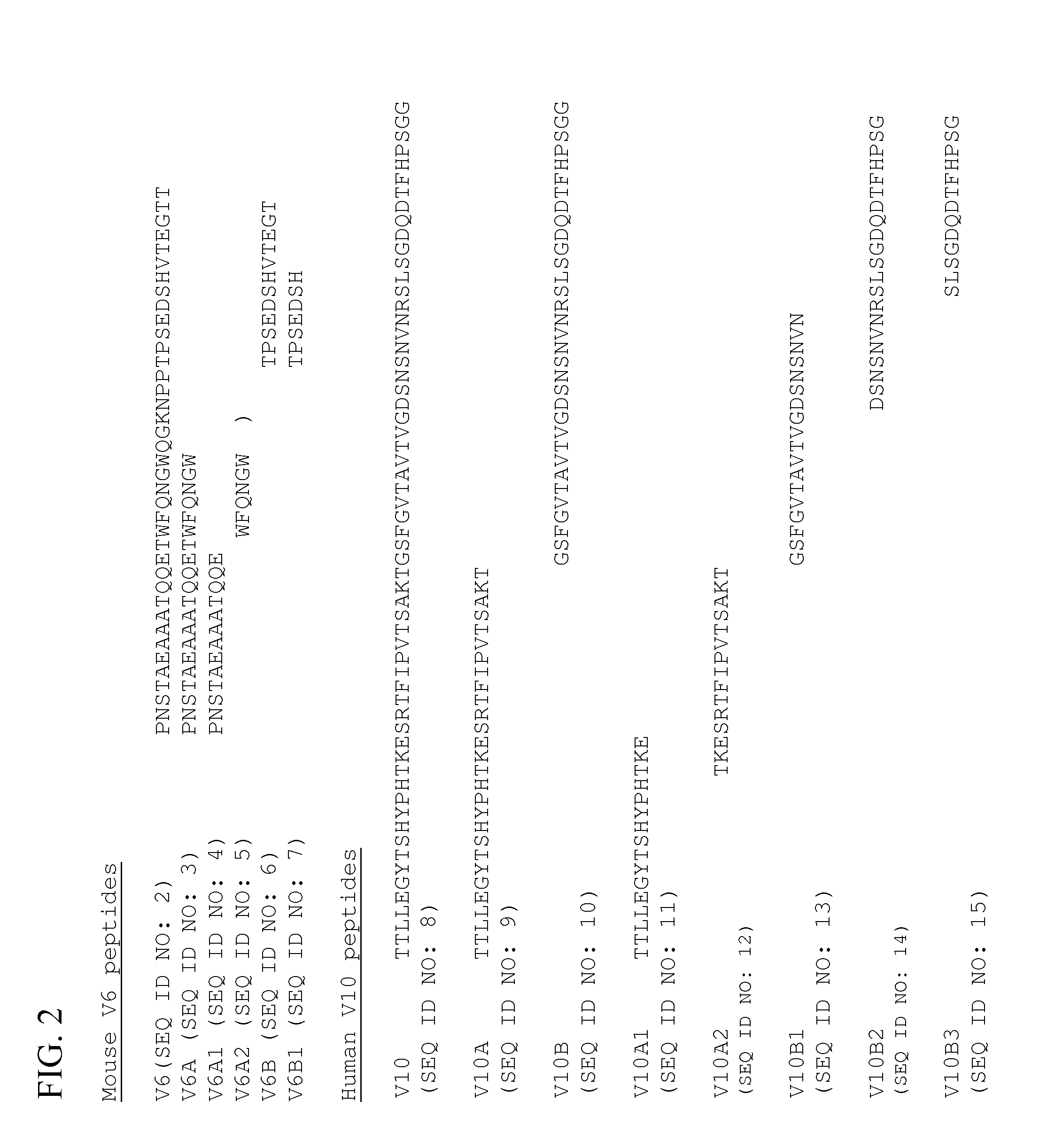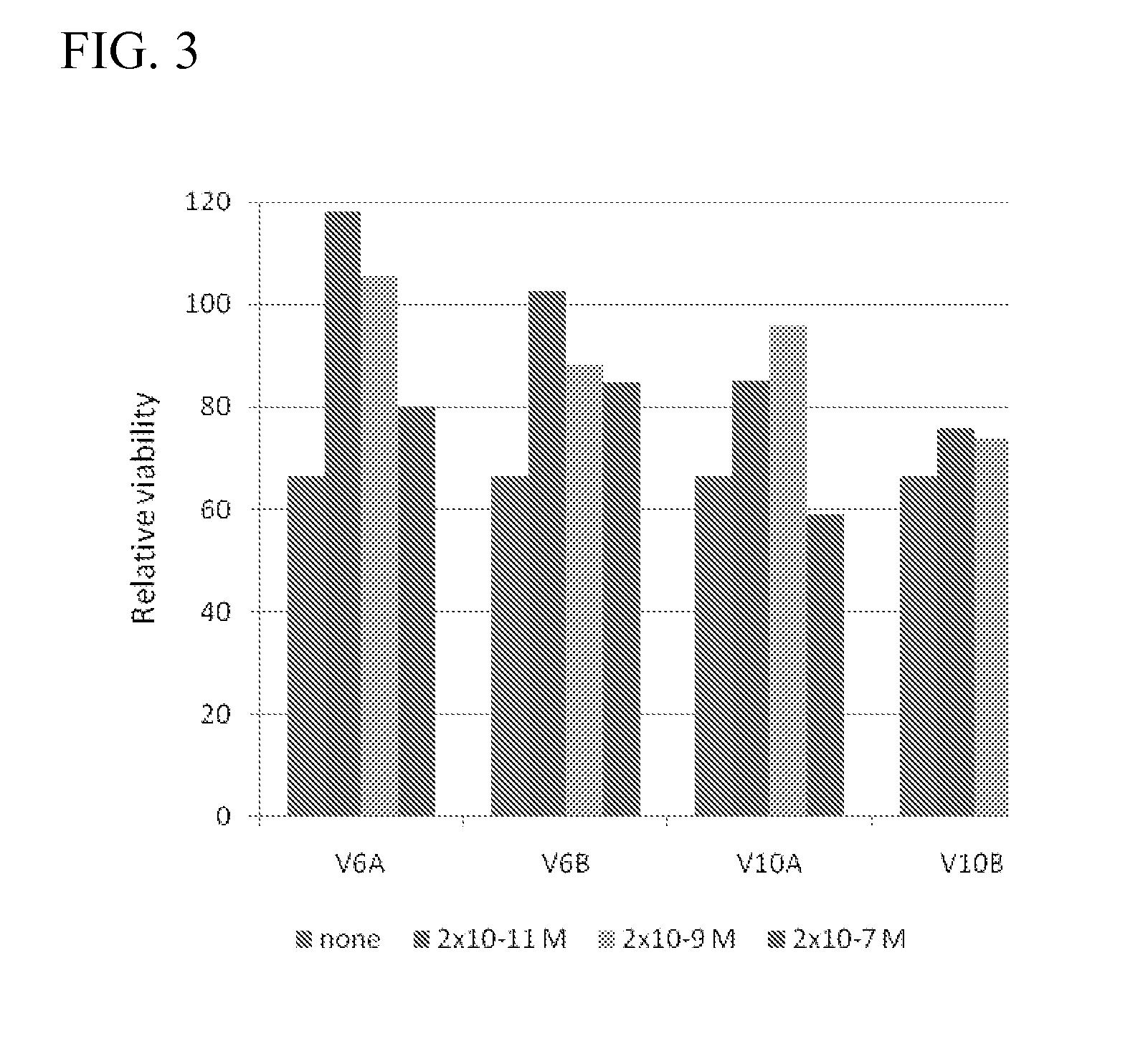Neuroprotective peptides
a technology of neuroprotective peptides and peptides, which is applied in the direction of cd44, animal/human proteins, biochemistry apparatus and processes, etc., can solve the problem of slow movemen
- Summary
- Abstract
- Description
- Claims
- Application Information
AI Technical Summary
Benefits of technology
Problems solved by technology
Method used
Image
Examples
example 1
Identification of Active Peptides from Exons 6 and 10 of CD44
Materials and Methods
[0189]All peptides were synthesized by LifeTein (South Pleinfield, N.J., USA) at >95% purity. N2A mouse neuroblastoma and SK-N-SH human neuroblastoma (ATCC) were maintained in Dulbecco's modified Eagle's medium supplemented with 10% fetal calf serum, L-Glut and 1% Penicillin-Streptomycin (Beit Haemek, Israel). Cells were maintained in an incubator at 37° C. with 5% CO2. SK-N-SH cells were treated with 3 μM RA (Sigma-Aldrich) for 5 days prior to each experiment to allow the cells to differentiate towards neuronal cells. Cells were grown in 24 wells plate and treated with Aβ peptides for 48 hrs or MPTP (Sigma-Aldrich, 24 hrs) after which they were subjected to the XTT viability assay. The XTT viability assay is based on the ability of metabolic active cells to reduce the tetrazolium salt XTT to orange colored compounds of formazan. The intensity of the water soluble dye is proportional to the number of m...
example 2
Structural / Functional Analyses of CD44 Peptides
Materials and Methods
[0192]All methods are the same as in Example 1 above. Peptides and 6-hydroxydopamine were purchased from Sigma-Aldrich (St. Lewis, USA).
Results
[0193]These finding prompted the present inventors to expand the peptide screen to smaller peptides derived from conserved regions in V6B, V10A and V 10B human sequences (Table 1).
TABLE I(for FIGS. 6 and 7)NameSequenceSEQ ID NO:V6B1TPKEDSH16V6B1_C4EDSH17V10A / B_LPVTSAKTGSFGVTAVTV18V10A / B_SPVTSAKTGSFG19V10A2_C7PVTSAKT20V10A2_C10TFIPVTSAKT21V10A1_N12 TTLLEGYTSHYP22V10A1_N8TTLLEGYT23V10A1_N6TTLLEG24V10A1_N+2_6LLEGYT25V10A1_N+4EGYTSHYP26(also referredto as P26)V10A1_EGYTEGYT27V10B3_N7SLSGDQDT28V10B3_N6SLSGDQD29V10B3_N5SLSGD30V10B2.5_6NVNRSL31V10B2.5_9 NVNRSLSGD32V10B2_N10DSNSNVNRSL33V10B1_8FGVTAVTV34(also referredto as P34)V10B1_7FGVTAVT35
[0194]These peptides were screened for their protective effect on 6-hydroxydopamine (6-OHDA) treated N2A cells at 1 pM concentration. 6-OHDA is ...
example 3
In Vivo Effect of Some Peptides of the Invention in an In Vivo Parkinson's Model
Materials and Methods
[0195]C57BL mice (all male, age 8-12 weeks, obtained from Harlan Laboratories Israel) were administered with 18 mg / kg MPTP (Sigma-Aldrich) at a dosage volume of 100 μl / mouse by intraperitoneal (IP) injection twice daily, 3 hrs apart on days 1 and 2. On study day 0 and for 8 consecutive days, mice were administered intranasally with PBS (vehicle) or one of the peptides at 1 mg / kg in 12 μl / mouse. All peptides used in in vivo studies were synthesized by LifeTein and were modified with N terminal acetylation and C terminal amidation. For intranasal instillation, each mouse was mildly anesthetized (2.5% Isoflurane) then restrained and held with the neck parallel to the table while a total volume of 12 μl was administered into the nostril. Six (6) μl was administered to the left nostril as two 3 μl drops, followed by a 15 sec hold, and 6 μl was administered to the right nostril as two 3 μl...
PUM
| Property | Measurement | Unit |
|---|---|---|
| Length | aaaaa | aaaaa |
| Acidity | aaaaa | aaaaa |
Abstract
Description
Claims
Application Information
 Login to View More
Login to View More - R&D
- Intellectual Property
- Life Sciences
- Materials
- Tech Scout
- Unparalleled Data Quality
- Higher Quality Content
- 60% Fewer Hallucinations
Browse by: Latest US Patents, China's latest patents, Technical Efficacy Thesaurus, Application Domain, Technology Topic, Popular Technical Reports.
© 2025 PatSnap. All rights reserved.Legal|Privacy policy|Modern Slavery Act Transparency Statement|Sitemap|About US| Contact US: help@patsnap.com



